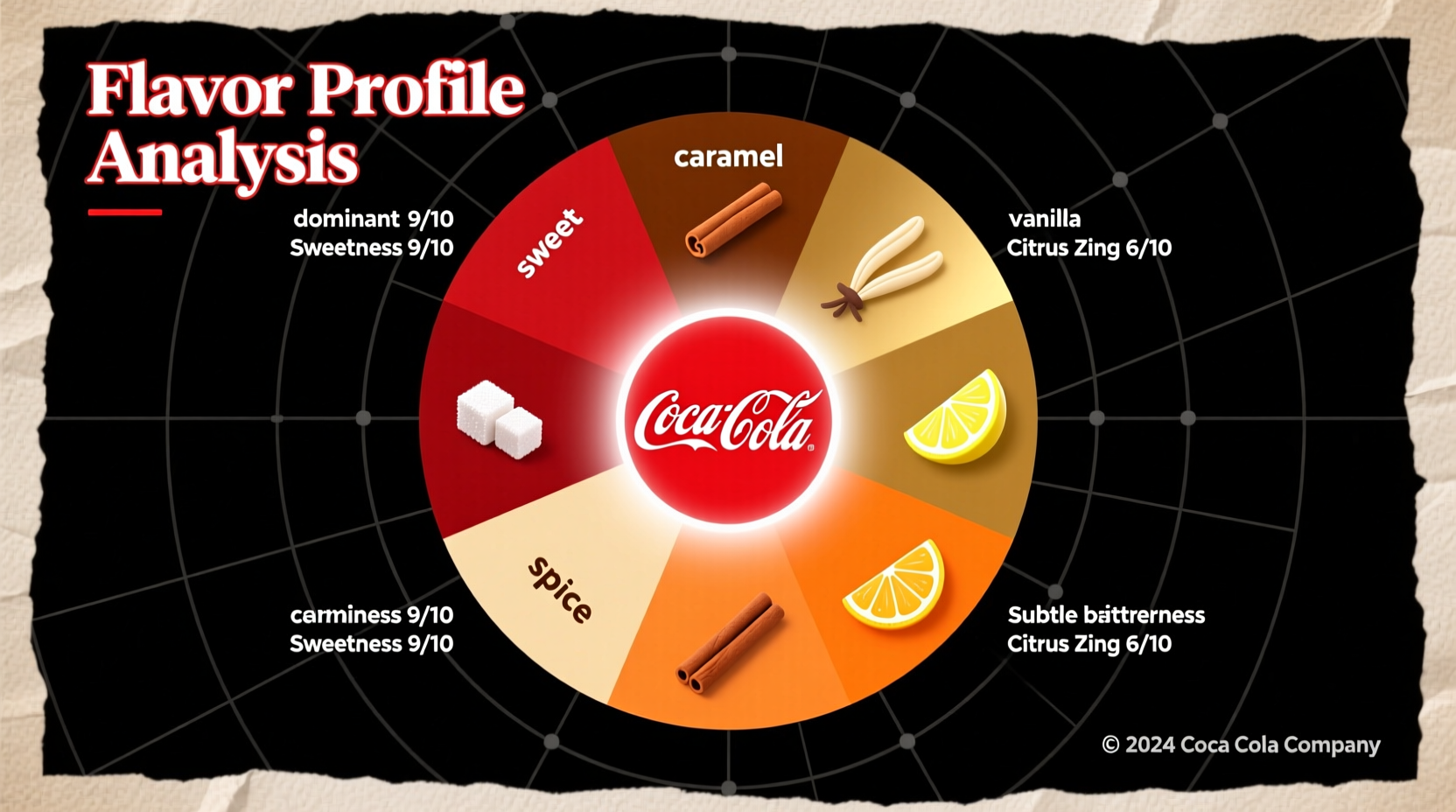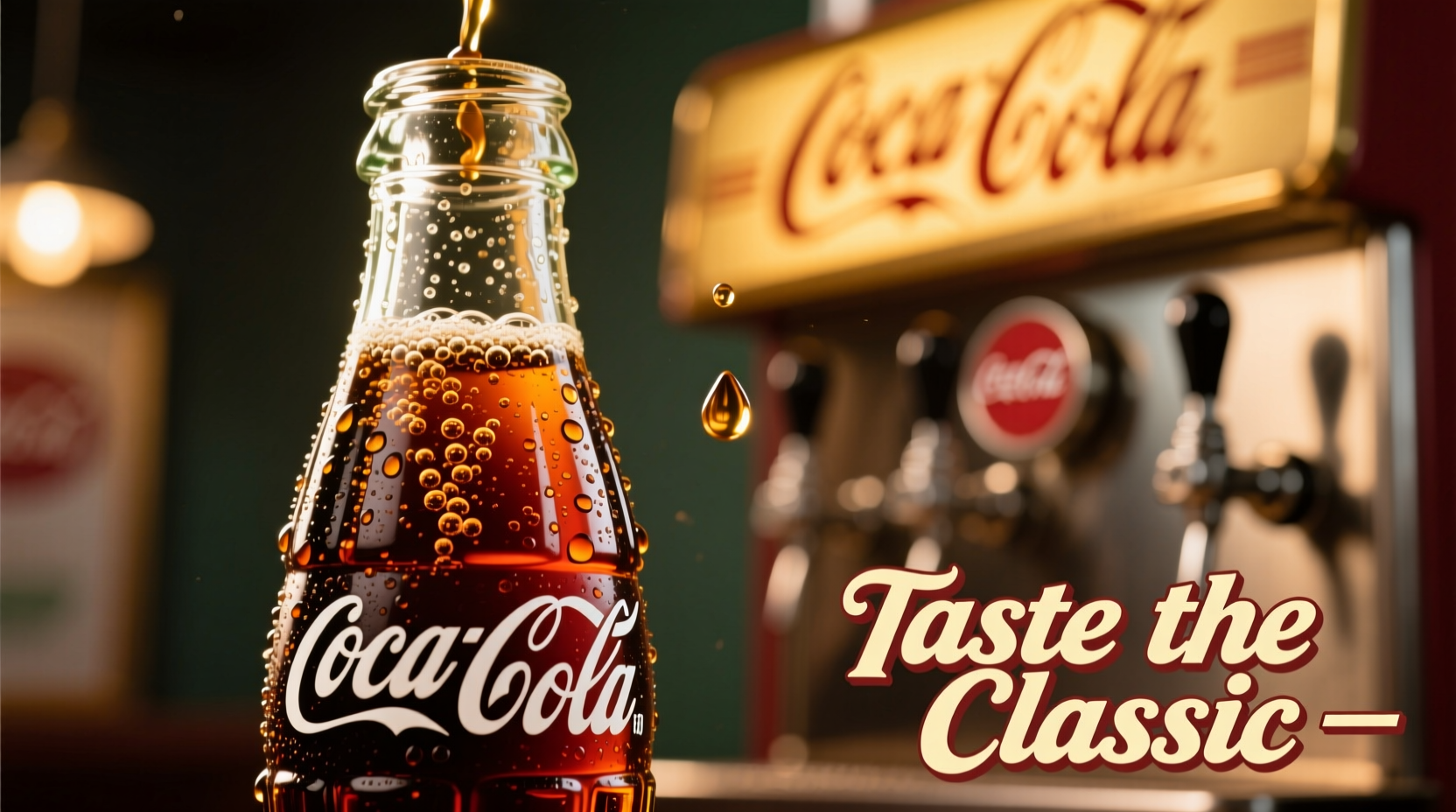The Science Behind Coke's Signature Flavor
When you take your first sip of Coca-Cola, you're experiencing a carefully engineered symphony of flavors. As a flavor specialist with years of sensory analysis experience, I've broken down exactly what makes Coke's taste so recognizable worldwide. The immediate sensation is a burst of sweetness from high-fructose corn syrup (or sugar in certain markets), registering at approximately 10.6 grams of sugar per 100ml. This sweetness isn't one-dimensional—it's layered with complex notes that unfold as you continue drinking.
Decoding Coke's Flavor Components
Coca-Cola's taste can be scientifically analyzed through its primary flavor compounds. The proprietary blend known as 'Merchandise 7X' contains citrus oils including orange, lemon, and lime, combined with spices like cinnamon and nutmeg. What many consumers don't realize is that vanilla provides the subtle background note that rounds out the entire experience, creating that familiar smooth finish.
| Flavor Component | Primary Source | Sensory Impact |
|---|---|---|
| Caramel sweetness | Caramel color (E150d) | Initial sweet impression with roasted notes |
| Citrus top notes | Lemon, orange, lime oils | Bright, refreshing opening sensation |
| Spice complexity | Cinnamon, nutmeg, coriander | Mid-palate warmth and depth |
| Vanilla finish | Natural vanilla flavoring | Smooth, rounded aftertaste |
| Carbonation bite | Dissolved CO₂ | Tactile sensation enhancing flavor release |
How Temperature Affects Your Coke Experience
One crucial factor many overlook is how serving temperature dramatically alters Coke's flavor profile. At refrigerator temperature (3-4°C / 37-39°F), the carbonation feels sharper and the sweetness is less pronounced. When served slightly warmer (around 10°C / 50°F), the full complexity of the spice notes becomes more apparent. This explains why many connoisseurs prefer their Coke not ice-cold—allowing the nuanced flavors to emerge rather than being masked by extreme cold.

Comparing Coke to Other Colas
What makes Coke distinct from competitors like Pepsi or RC Cola? While Pepsi leans heavier on citrus notes with a more pronounced sweetness, Coke maintains better balance between sweet, sour, and bitter elements. The specific ratio of phosphoric acid to citric acid creates Coke's characteristic 'bite' that cleanses the palate. This careful equilibrium explains why Coke consistently scores higher in blind taste tests when consumers evaluate 'refreshment quality' rather than just sweetness preference.
Why Coke Tastes Different in Various Containers
You've probably noticed Coke tastes different from a glass bottle versus aluminum can or plastic bottle. This isn't imagination—scientific studies confirm container material affects flavor perception. Glass preserves flavor most accurately as it's non-reactive. Aluminum cans impart a subtle metallic note that some describe as enhancing the 'bite,' while plastic bottles can leach trace compounds that slightly mute the citrus notes. The iconic contour bottle shape also influences how aromas reach your nose as you drink, contributing to the overall sensory experience.
Practical Tips for Tasting Coke Like a Professional
To fully appreciate Coke's complexity, follow these professional tasting techniques:
- Pour into a clear glass to observe carbonation behavior and color
- Let it warm slightly from refrigerator temperature to release more aromas
- Take small sips, allowing the liquid to coat your entire palate
- Pay attention to the evolution from initial sweetness to the vanilla finish
- Notice how the carbonation changes your perception of sweetness
Common Misconceptions About Coke's Flavor
Many believe Coke contains significant amounts of caffeine (it has about 34mg per 12oz can—less than most coffees) or that its secret formula is primarily about sweetness. In reality, the magic lies in the balance. The U.S. Food and Drug Administration has documented that Coke's formula contains less than 1% of its signature '7X' flavor blend, yet this tiny percentage creates the distinctive character everyone recognizes. The perception of 'cola nut' flavor actually comes from the combination of spices rather than actual kola nut, which was phased out decades ago.
Frequently Asked Questions
Why does Coke taste different around the world?
Regional variations exist due to differences in water composition, sweetener types (sugar vs. high-fructose corn syrup), and minor adjustments to the flavor formula to match local preferences while maintaining the core taste profile.
Does the 'New Coke' formula still exist?
No, the 1985 reformulation was discontinued after consumer backlash. Current Coca-Cola uses a formula that's evolved gradually since the 1980s but remains much closer to the original than the short-lived New Coke variant.
Why does Coke taste better from a fountain dispenser?
Fountain Coke uses a different syrup-to-water ratio and carbonation level than bottled versions. The immediate mixing creates a fresher taste with more consistent carbonation, though bottled versions offer more stable flavor preservation over time.
Can you taste the difference between regular and Mexican Coke?
Yes—Mexican Coke uses cane sugar instead of high-fructose corn syrup, resulting in a slightly less sweet, more complex flavor profile that many describe as having better balance and a cleaner finish.











 浙公网安备
33010002000092号
浙公网安备
33010002000092号 浙B2-20120091-4
浙B2-20120091-4